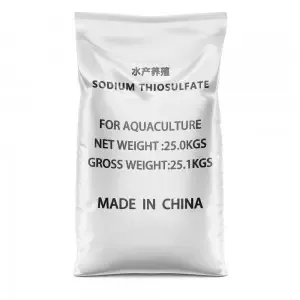



0.05 m naoh ph
Understanding the pH of 0.05% NaOH Solution
Sodium hydroxide (NaOH), commonly known as lye or caustic soda, is a strong base widely used in various applications, including cleaning, manufacturing, and chemical reactions. When it is dissolved in water, it dissociates completely into sodium (Na⁺) and hydroxide (OH⁻) ions, leading to significant changes in the pH of the solution. This article aims to explore the properties of a 0.05% NaOH solution and its pH implications.
Properties of Sodium Hydroxide
Sodium hydroxide is a white solid that is highly soluble in water, forming an alkaline solution. The solution's pH level is a measure of its acidity or alkalinity, with lower values indicating acidic solutions and higher values signifying alkaline (basic) solutions. The pH scale ranges from 0 to 14, with 7 being neutral. Due to NaOH's complete dissociation in water, even a small concentration can lead to a substantially high pH level.
Concentration and pH Calculation
To analyze the pH of a 0.05% NaOH solution, we first need to convert the concentration from percentage to molarity. A 0.05% NaOH solution means there are 0.05 grams of NaOH per 100 milliliters of solution. Given that the molar mass of NaOH is approximately 40 g/mol, we can calculate the molarity
\[ \text{Molarity (M)} = \frac{\text{grams of solute}}{\text{molar mass} \times \text{liters of solution}} \] \[ = \frac{0.05 \, \text{g}}{40 \, \text{g/mol} \times 0.1 \, \text{L}} = 0.0125 \, \text{mol/L} \]
Next, since sodium hydroxide is a strong base, it completely dissociates in solution
\[ \text{NaOH} \rightarrow \text{Na}^+ + \text{OH}^- \]
This means that the concentration of OH⁻ ions is also 0.0125 M. To find the pH, we first determine the pOH
0.05 m naoh ph

\[ \text{pOH} = -\log[\text{OH}^-] = -\log(0.0125) \approx 1.9 \]
Since the relationship between pH and pOH is given by the equation
\[ \text{pH} + \text{pOH} = 14 \]
We can calculate the pH
\[ \text{pH} = 14 - \text{pOH} \approx 14 - 1.9 \approx 12.1 \]
Implications of pH in NaOH Solutions
The pH of a 0.05% NaOH solution, which is about 12.1, indicates that it is strongly alkaline. This high pH has several implications, particularly in terms of safety and handling. Sodium hydroxide is highly corrosive and can cause severe damage to tissues on contact. Therefore, proper safety measures, such as wearing gloves and eye protection, are essential when working with this chemical.
In various applications, the high pH of NaOH solutions is beneficial. For instance, in cleaning products, the alkaline nature helps in breaking down dirt and grease, making it effective for cleaning surfaces. In industrial settings, NaOH is often used in processes such as saponification in soap making and as a pH adjuster in various chemical reactions.
Conclusion
Understanding the pH of a 0.05% NaOH solution is essential for its safe and effective use. With a pH of approximately 12.1, this solution is highly alkaline, necessitating careful handling to prevent chemical burns and other hazards. The strong basicity of sodium hydroxide makes it invaluable in numerous applications, reinforcing the importance of comprehending its properties to exploit its benefits while minimizing risks. Whether in laboratory settings or industrial applications, a thorough understanding of pH and chemical behavior is paramount for the responsible use of sodium hydroxide.
-
Why Sodium Persulfate Is Everywhere NowNewsJul.07,2025
-
Why Polyacrylamide Is in High DemandNewsJul.07,2025
-
Understanding Paint Chemicals and Their ApplicationsNewsJul.07,2025
-
Smart Use Of Mining ChemicalsNewsJul.07,2025
-
Practical Uses of Potassium MonopersulfateNewsJul.07,2025
-
Agrochemicals In Real FarmingNewsJul.07,2025
-
Sodium Chlorite Hot UsesNewsJul.01,2025










